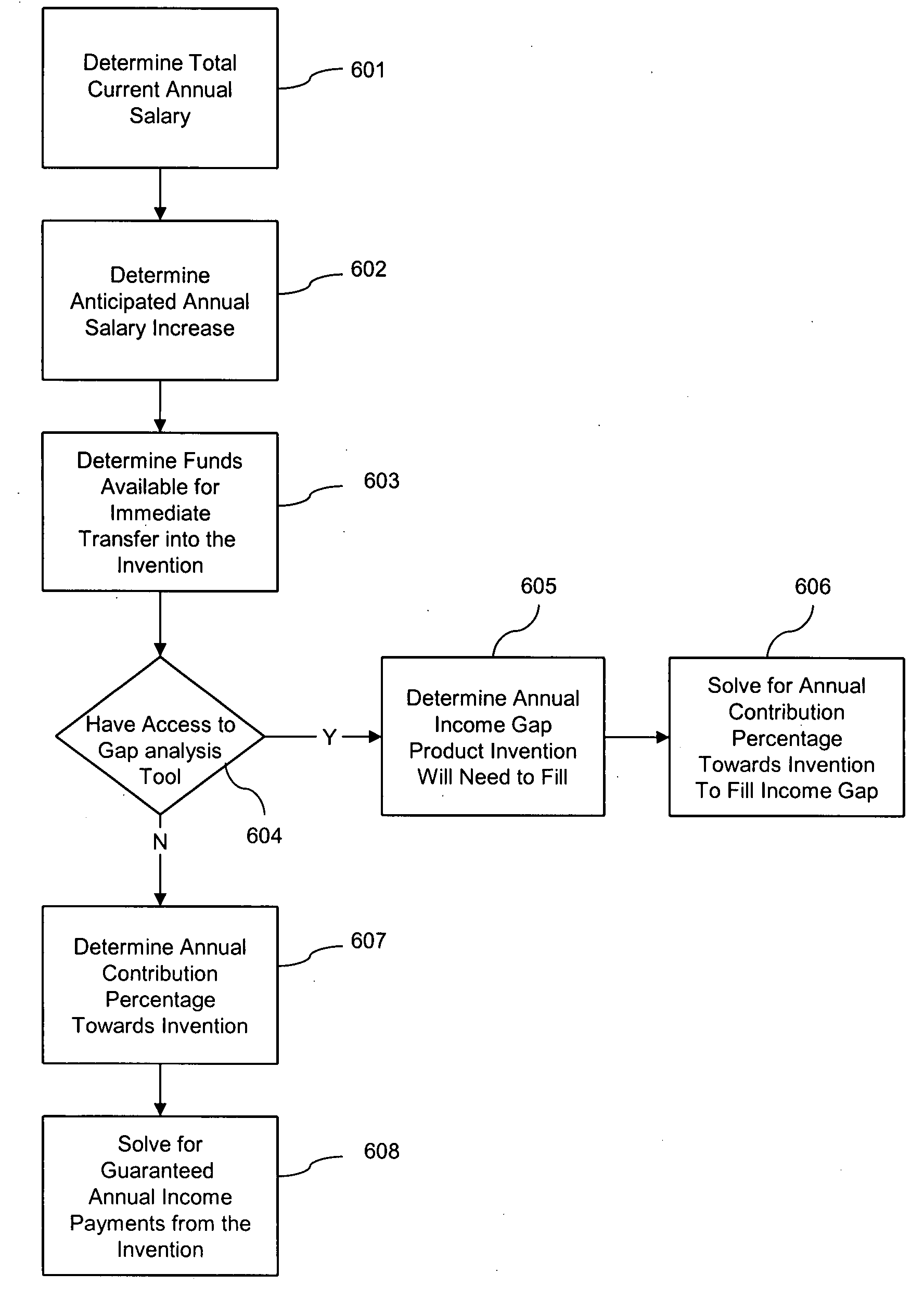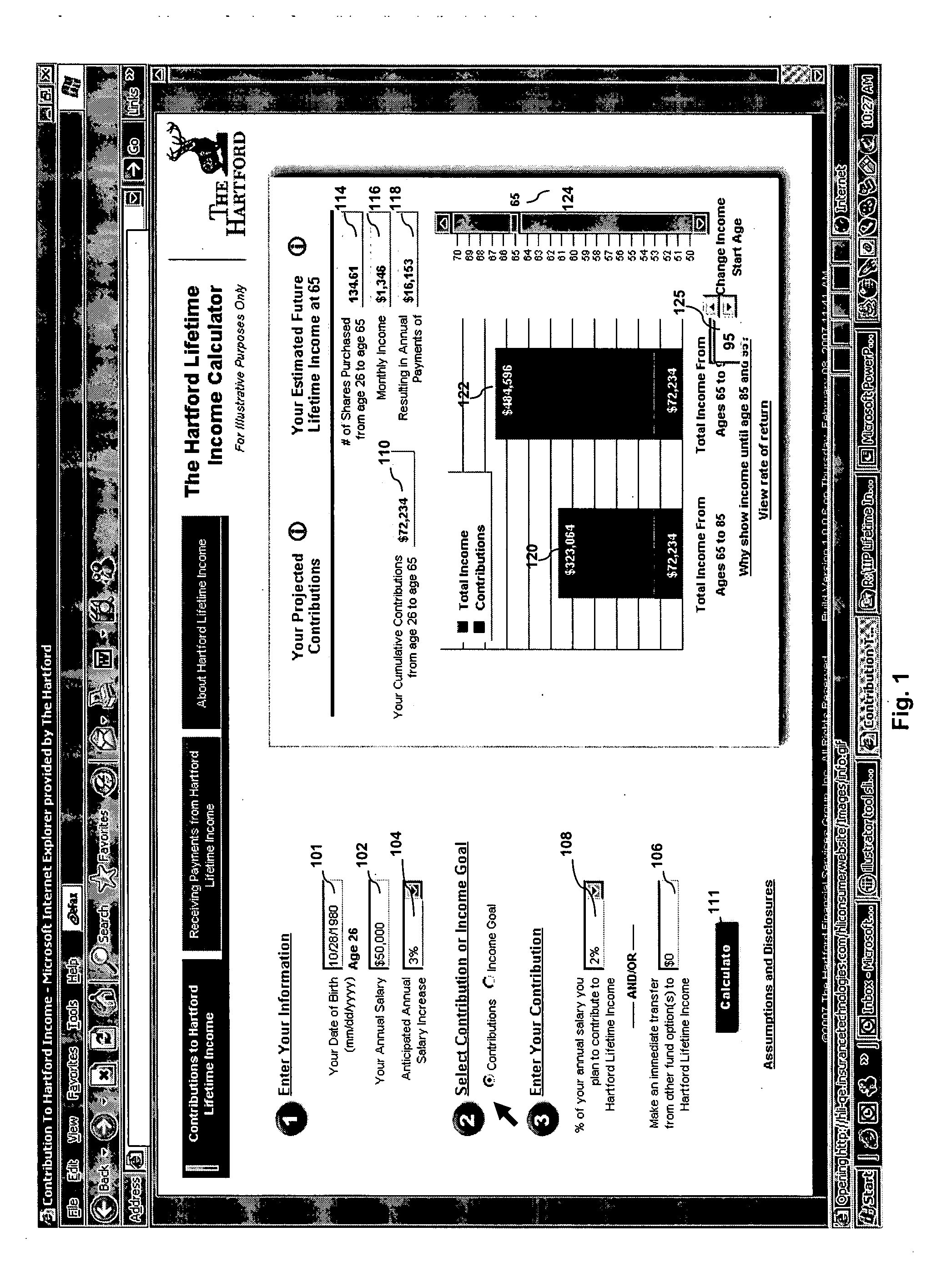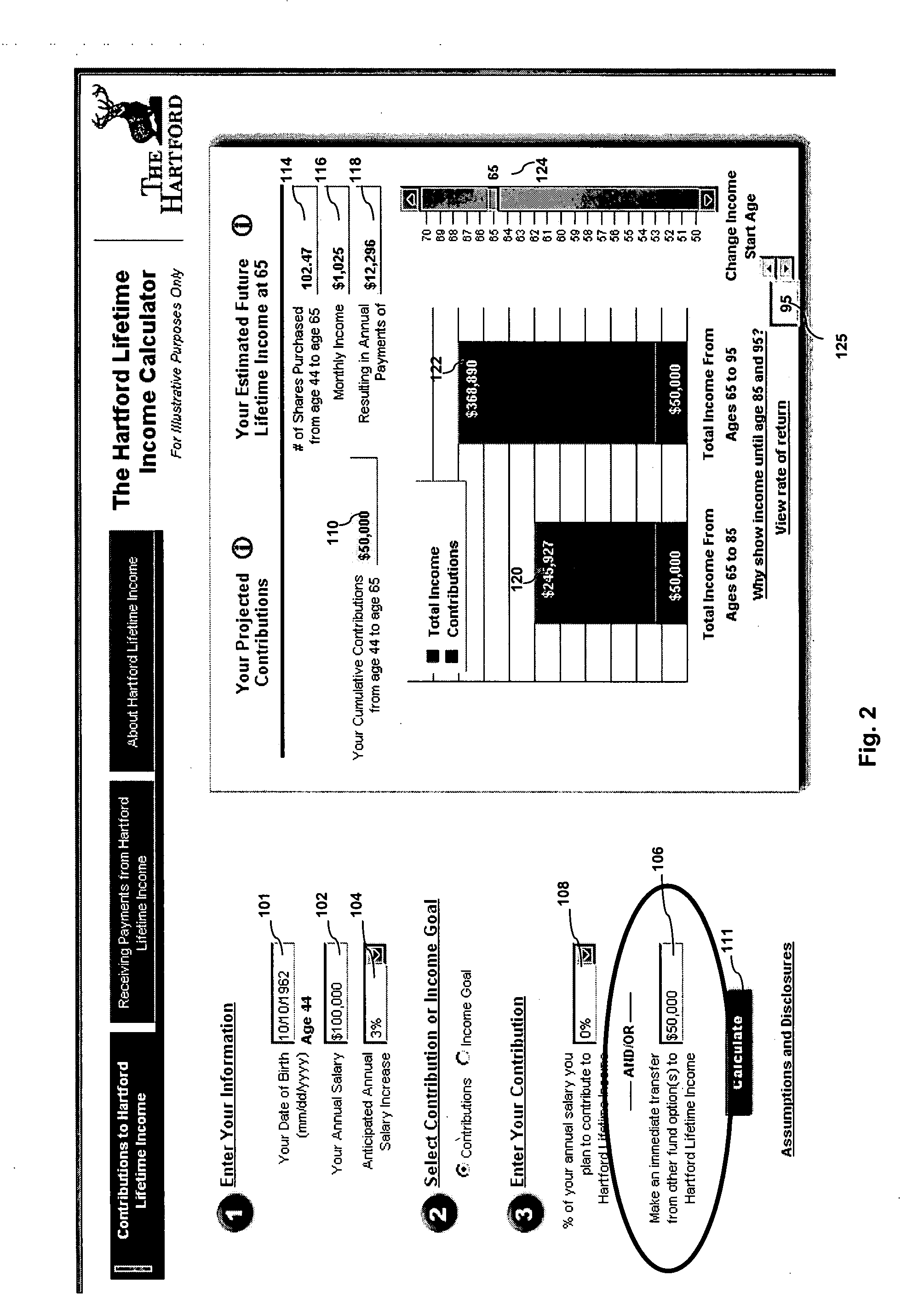Lifetime income
a lifetime income and investment option technology, applied in the field of lifetime income, can solve the problems of limited income sources of individuals, many people have great trouble preparing for long-term future events, and individual without independent financial suppor
- Summary
- Abstract
- Description
- Claims
- Application Information
AI Technical Summary
Benefits of technology
Problems solved by technology
Method used
Image
Examples
example # 1
EXAMPLE #1
[0134] A male age 50 is contemplating retirement. Between Social Security and a small pension, he already has $2,000 of monthly income. Assume that he also has $500,000 in liquid investments. Also assume that he needs a minimum of $3,500 in monthly income, but would prefer to have $4,500 or $5,000 of monthly income. If he draws down on his investments at the rate of 4% per year, a conservative rate, he can just make his $3,500 minimum. If he draws down on his investments at an 8% rate, he can reach his $5,000 goal. However, at that rate survival risk is very high.
[0135] Next, assume that the individual spends $100,000 to buy 147 lifetime income shares that will pay him $1,470 per month once he reaches 65. The individual can then draw down on his remaining $400,000 of investments at the normal 4% rate with the confidence that he will never run out of income. In addition, the supplemental income of the lifetime income shares assures the purchaser of an income very close to ...
example # 2
EXAMPLE #2
[0136] A female age 30 has learned that her company's defined benefit pension plan has been frozen and that she will accrue no further benefits under the plan. She elects to contribute $200 per month to lifetime income, to provide herself with lifetime income in retirement. She uses the illustration tool to project that this will generate extra income in retirement of roughly $1,700 per month, assuming that she continues to contribute at that rate.
[0137] When she factors in her anticipated rate of salary increase, the projected income at age 65 increases to over $2,700 per month. When combined with Social Security, she concludes that her lifetime income shares will serve to replace the income her employer's defined benefit plan would have provided.
example # 3
EXAMPLE #3
[0138] A male age 50 contributes $10,000 to lifetime income at age 50, at a price per share of $679.12, purchasing $10,000 / $679.12=14.72 shares. He then dies at age 55, and his wife is 56 at the time of his death.
[0139] The death benefit payable to the wife is a choice between a cash death benefit and shares of lifetime income. The cash death benefit is a return of net contributions, or $10,000. Alternatively, she can elect to receive a converted number of shares equal to 14.72 shares×(price per share age 55 / price per share age 56)=14.72×($899.14 / $950.85)=13.92 shares. So the wife can elect to receive either $10,000 or 13.92 shares of lifetime income. These shares will provider her with $139.20 of monthly lifetime income when she reaches age 65 in just nine years.
PUM
 Login to View More
Login to View More Abstract
Description
Claims
Application Information
 Login to View More
Login to View More - R&D
- Intellectual Property
- Life Sciences
- Materials
- Tech Scout
- Unparalleled Data Quality
- Higher Quality Content
- 60% Fewer Hallucinations
Browse by: Latest US Patents, China's latest patents, Technical Efficacy Thesaurus, Application Domain, Technology Topic, Popular Technical Reports.
© 2025 PatSnap. All rights reserved.Legal|Privacy policy|Modern Slavery Act Transparency Statement|Sitemap|About US| Contact US: help@patsnap.com



